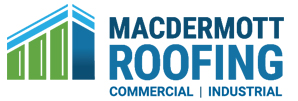Many building owners struggle with the question of when to repair their commercial roofs. These roofs are sturdy and reliant, even in harsh climates. However, exposure to the elements will eventually cause wear and tear.
To ensure you keep your roof in optimal condition, have it inspected semi-annually, before and after winter. Many problems become apparent when the snow melts, and you want to ensure your roof is in good condition before the next blizzard.
Between inspections, there are signs you can look for that point to a roof needing work and noticing these ahead of time helps you with your maintenance budgeting.
Below are some common symptoms of potential commercial roof problems.
Age
We all get old and need some TLC sometimes, and your commercial roof is no different. Worn components can leave you with the dreaded leaks in the middle of a thundershower or torrential snowfall. Having maintenance done before the leaks appear saves you time and headaches.
BUR roofs can last 50 years, while membranes go from 25-100 years. However, regardless of durability, seals break down eventually and no longer function. Knowing the age of your roof helps you plan ahead.
If your roof is nearing or past its expected lifespan, it’s time to schedule a replacement.
Leaks
Water damage destroys buildings. It can leave you with mold, decaying sheetrock, rusted and rotted infrastructure, cause electrical fires, and create other hazards. When your commercial roof leaks, it’s generally because of punctures or broken seals, flashing wear and tear, or failing sealant.
The biggest problem with leaks is it never ends with just one. They multiply like cockroaches and never go away on their own. As they spread, they deposit molds that can reach toxic levels before becoming noticeable. Black mold causes health problems even in healthy adults and is particularly harmful to children, the elderly, and the infirm.
Your Energy Bills Keep Going Up
If the weather is typical and your utility rates are the same, you should have predictable monthly bills. If not, conditioned air may escape through compromised seams, decayed insulation, and other means. Letting hot air out in the winter and cool air out in the summer are surefire ways to see those energy bills spike.
Visible Damage
Between inspections, it’s always prudent to regularly look at your commercial roof. For example, you may notice seams pulling apart, flashing coming loose, or blisters formulating beneath sheets of material.
Caught early, most visible damage is correctable.
Should You Roof Over or Tear Away?
Roof replacements may be expensive, but sometimes they are necessary. When patch jobs merely delay the inevitable, they amount to throwing good money after bad. Before deciding that a roof replacement is too expensive, consider that two types exist, and you may find them more affordable than initially expected.
Roof replacements often cost a great deal for flat roofs. Because the adhered membrane and asphalt must be demolished, significant labor is involved. For this reason, replacing the roof with a roof may be preferable.
Another option is to patch seal problems on the existing layer, complete necessary blister repairs and lay over a new layer of membrane or BUR sheeting.
This method has limits regarding membranes, though it has a strong history with BUR. Before deciding, determine if you are only delaying an inevitable tear away.
Repair or Replace Your Industrial Roof?
Ultimately, the decision to repair or replace a roof centers on its condition and age. If severely damaged, the aged roof is likely to become an ongoing expense. Like an old car, one thing after another breaks down, and, eventually, you spend more fixing the old than the price of the new.
However, if your roof remains in decent shape and has many years remaining in its life expectancy, repairing makes the most sense, whether a membrane roof or BUR. They generally consist of simple materials to repair versus sloped roofs and shingle styles. Many repairs can be completed by cutting away blisters and reapplying adhesive.
When damage is minimal and localized, it’s likely financially better to repair the roof, provided it is not coming to the end of its useful life. However, if the roof is old and the damage spreads, it’s probably time for a replacement.
Commercial roofing is our specialty at MacDermott Roofing and we address all roofing issues on every type of roof and building. Our commercial roof installers are trained and certified to provide roofing services including roof repair, commercial roof maintenance and new roof installation. Interested in a Duro-Last Roof System? Call us to learn more about it!


